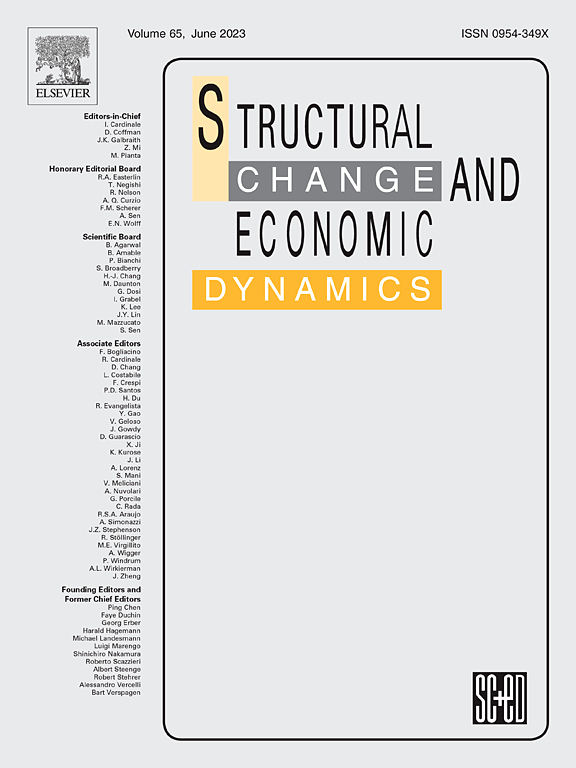International crises, national scale, and economic resilience in the 21st century
IF 5.5
2区 经济学
Q1 ECONOMICS
引用次数: 0
Abstract
Based on the theoretical connotation of economic resilience, this article constructs an evaluation system of 21 basic indicators-including economic development level, territorial area, and total grain output-to assess economic resilience. Using the entropy method, we calculated the economic resilience, resistance resilience, and recovery resilience of 47 countries from 2006 to 2022, and conducted an in-depth analysis of the development trends of economic resilience across countries of different scales. Furthermore, the TVP-VAR model was employed to investigate the impact of economic resilience on economic development under the shocks of international crises in the 21st century. The results indicate that although global economic resilience was impacted by multiple crises, it generally showed a fluctuating upward trend. The 2008 global financial crisis and the 2014–2016 El Niño event primarily affected resistance resilience. However, the former led to a decrease in the average level of global economic resilience, while the latter only slowed its rate of improvement. The COVID-19 pandemic caused a global production halt, resulting in significant declines in both resistance and recovery resilience. National scale factors—such as governance capacity, population size, territorial area, gross domestic product, global economic influence, and income level—significantly influence economic resilience. Large countries can leverage their scale advantages to demonstrate strong resilience. International crises have triggered imbalances in global economic resilience and significantly impacted national economic development, with varying effects depending on the scale of the economy. Large countries experienced shorter shock durations and quicker recoveries, whereas small economies faced longer and more unstable recovery processes.
21世纪的国际危机、国家规模和经济弹性
基于经济弹性的理论内涵,构建了经济发展水平、国土面积、粮食总产量等21个基本指标的经济弹性评价体系。运用熵值法计算了2006 - 2022年47个国家的经济弹性、抵抗弹性和恢复弹性,深入分析了不同规模国家经济弹性的发展趋势。在此基础上,运用TVP-VAR模型考察了21世纪国际危机冲击下经济弹性对经济发展的影响。结果表明,尽管全球经济弹性受到多重危机的影响,但总体上呈现波动上升趋势。2008年全球金融危机和2014-2016年El Niño事件主要影响了抵抗能力。然而,前者导致全球经济弹性平均水平下降,而后者只是减缓了其改善速度。2019冠状病毒病大流行导致全球停产,导致抵抗力和恢复能力大幅下降。国家规模因素——如治理能力、人口规模、国土面积、国内生产总值、全球经济影响力和收入水平——显著影响经济弹性。大国可以利用规模优势,展现强大的韧性。国际危机引发全球经济韧性失衡,严重影响各国经济发展,影响因经济规模而异。大国经历了较短的冲击持续时间和较快的复苏,而小型经济体则面临着更长、更不稳定的复苏过程。
本文章由计算机程序翻译,如有差异,请以英文原文为准。
求助全文
约1分钟内获得全文
求助全文
来源期刊

Structural Change and Economic Dynamics
ECONOMICS-
CiteScore
9.60
自引率
4.90%
发文量
159
期刊介绍:
Structural Change and Economic Dynamics publishes articles about theoretical, applied and methodological aspects of structural change in economic systems. The journal publishes work analysing dynamics and structural breaks in economic, technological, behavioural and institutional patterns.
 求助内容:
求助内容: 应助结果提醒方式:
应助结果提醒方式:


